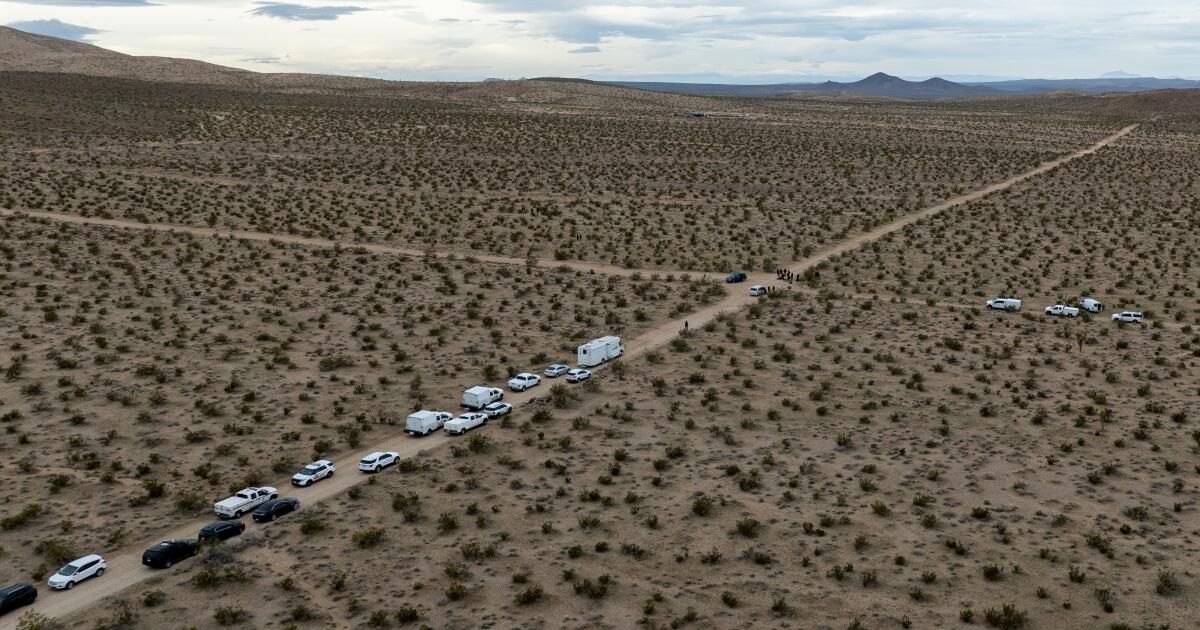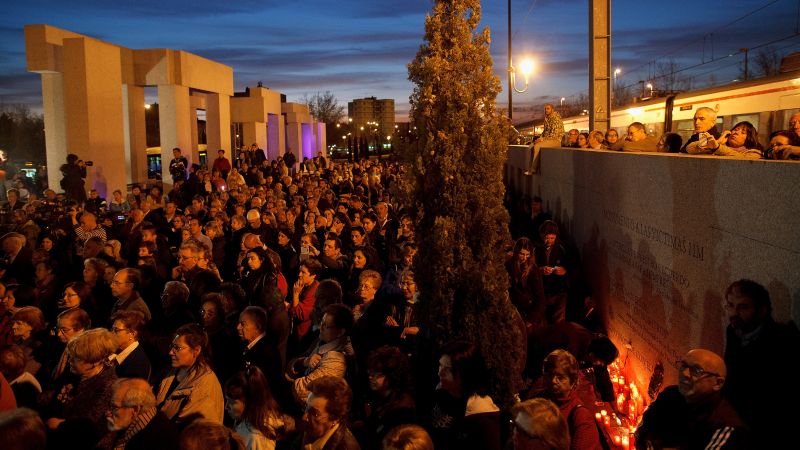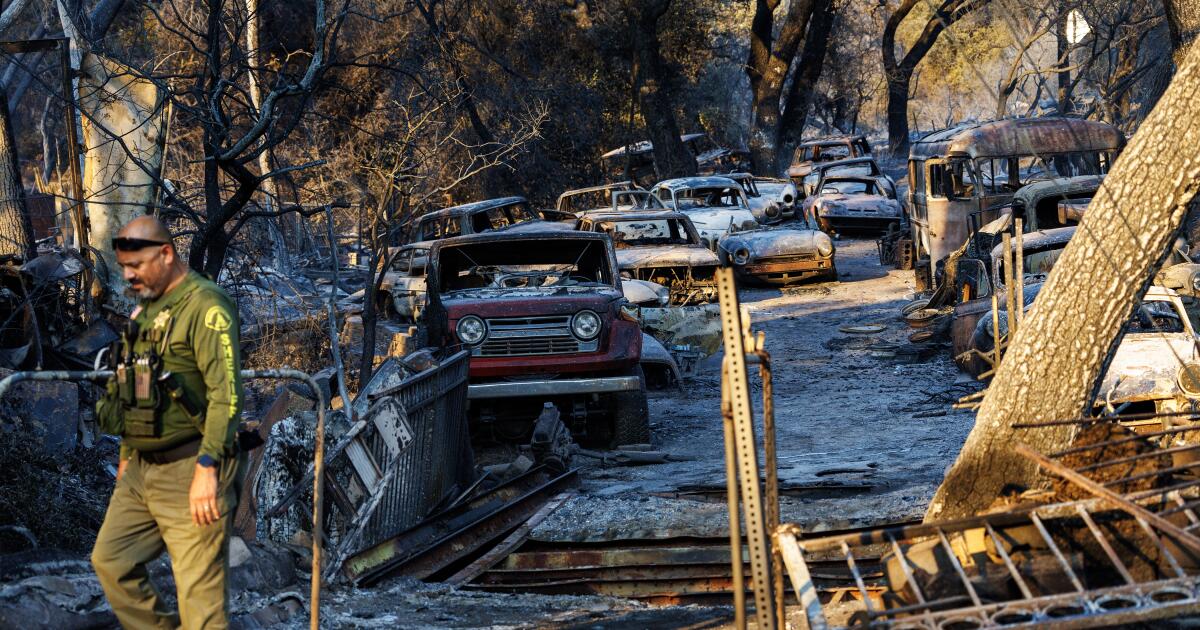Several days after authorities discovered six bodies in the remote El Mirage Desert in San Bernardino County, questions remain among experts about whether the deaths could be a gang- or cartel-related murder.
Information that investigators have not yet released — the ages of the dead and their criminal history, for example — would help give a better idea of a possible motive for the killings, experts say.
“When you see the bullet casings, the number of people who died, the fact that the vehicle was abandoned in the middle of the desert without any attempt to hide it, it speaks to a certain type of audacity that makes you think that it is related to some type of organizational crime,” said Peter Hanink, professor of sociology and criminology at Cal Poly Pomona.
“But if he is part of the Mexican drug cartels, so far I see no evidence of that.”
San Bernardino County sheriff's deputies responded to a welfare check around 8:15 p.m. Tuesday in an isolated desert area near Lessing Avenue and Shadow Mountain Road, near US Highway 395 in El Mirage, according to police. Sheriff's Department spokesperson, Mara Rodríguez. El Mirage is about 50 miles northeast of Los Angeles.
Five bodies were initially found, but Rodriguez said a sixth was discovered Wednesday morning. The California Highway Patrol Aviation Division also assisted in the case. The investigation is ongoing; Officials have not released details about when or how the people died. Their identities had not been revealed as of Friday.
A news conference is expected to be announced next week if more information is available, Rodriguez said.
“We thank the public and our media partners for their patience as we conduct a careful and thorough investigation to bring justice to the families of those affected,” he said.
Although officials did not confirm whether the bodies had gunshot wounds or had been burned, footage from television stations showed bullet casings around the area and at least one of the vehicles riddled with bullet holes. ABC7 also reported that the bodies appeared to be burned.
Although some law enforcement sources have suggested the deaths could have resulted from organized crime or cartel violence, Hanink said cartels are often misunderstood and serve as a “sort of boogeyman” for people to think about. automatically when crimes of this nature occur.
“If we talk about Mexican cartels, they operate almost exclusively at the regional level,” he said. “Occasionally you'll see it in the US, and usually it's people trying to flee the cartel to the US and the cartel tracks them down. “There are no cartels that generally operate within the United States.”
Hanink, who has no further information about the case, also said the fact that federal agencies do not appear to be involved in the investigation suggests there is no international link.
“If this were linked to cartels, as in the operations of international criminal organizations in the United States, then the FBI and the Department of Homeland Security would almost certainly be involved,” he said. “If drug cartels were suspected, presumably the DEA would be involved.”
David Pyrooz, a sociology professor at the University of Colorado Boulder who studies gangs and criminal networks, agreed that it's too early to draw conclusions about a possible motive. Pyrooz also has no further information about the incident beyond reading news articles.
What caught Pyrooz's attention was the number of victims, the fact that they were taken to a remote area and that their bodies were burned. He said that while it is possible the deaths were carried out by a street gang, it would be an “outlier” based on how gang killings typically occur.
“Usually these are drive-by shootings and the victims die on the way to the hospital, rather than more premeditated efforts to get someone out of a location and to a remote area,” he said.
Pyrooz also emphasized the difference between gang-related crimes (violence that occurs between people who are in some way affiliated with a gang) and gang-motivated crimes, which he said are carried out to enhance a gang's status. or to seek revenge against a rival. gang.
“In California, it tends to be more neighborhood groups,” he said. “It's not like the gang is spread throughout the city and across geographic locations. Crimes occur in a staging area such as a park, shopping center or school, or they occur outside a home or location in a neighborhood where revenge is being attempted on another group.”
According to Pyrooz, it's not common for gangs to venture outside their neighborhoods.
“Based on where this occurred, I highly doubt there are active gangs in this area,” he said.
To better evaluate a possible motive, Pyrooz said he would look at the victims' age, their criminal history and any type of group or affiliation they may have had. I would also investigate if they had any links to drugs.
Based on the information available, it seemed to Pyrooz that people had access to each other and there was a certain level of trust that would allow them to be in each other's company.
“There are a lot of people who use leaps of logic to say they are victims of cartels or organized crime groups, but we really don't know that yet,” he said. “I am concerned about the narrative that is being presented to the investigation.”












